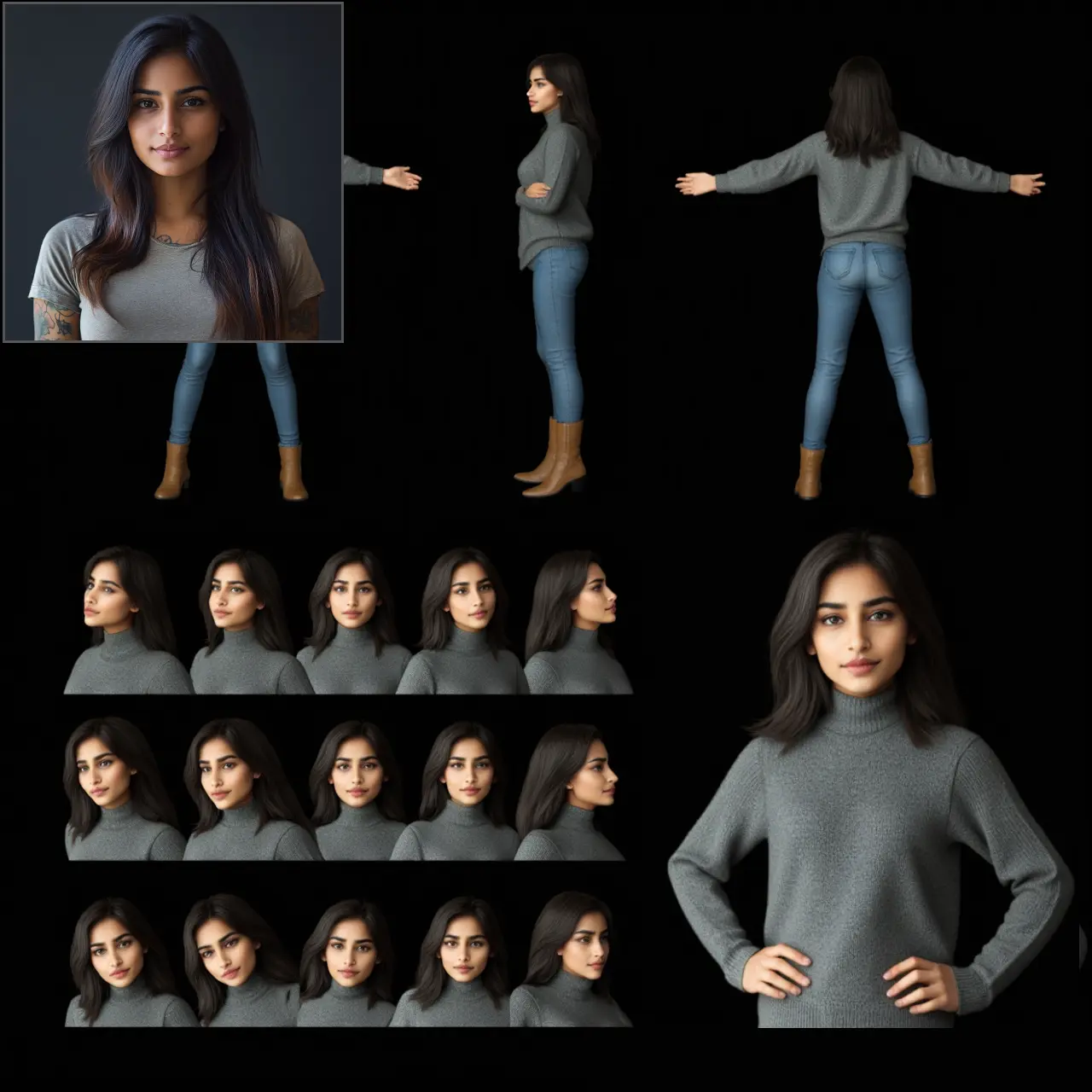ComfyUI Node: GR Checkered Board
GR Checkered Board
CategoryGraftingRayman/Patterns
GraftingRayman (Account age: 447days) Extension
GraftingRayman Latest Updated
2025-03-24 Github Stars
0.06K
How to Install GraftingRayman
Install this extension via the ComfyUI Manager by searching for GraftingRayman- 1. Click the Manager button in the main menu
- 2. Select Custom Nodes Manager button
- 3. Enter GraftingRayman in the search bar
Visit ComfyUI Online for ready-to-use ComfyUI environment
- Free trial available
- 16GB VRAM to 80GB VRAM GPU machines
- 400+ preloaded models/nodes
- Freedom to upload custom models/nodes
- 200+ ready-to-run workflows
- 100% private workspace with up to 200GB storage
- Dedicated Support
GR Checkered Board Description
Generate customizable checkered board patterns for AI art projects with borders and color options.
GR Checkered Board:
The GR Checkered Board node is designed to generate a checkered board pattern image, which can be used as a background, texture, or visual element in your AI art projects. This node allows you to customize various aspects of the checkered board, including the number of rows and columns, the size of each tile, and the colors of the tiles. Additionally, you can add borders around each tile and an outer border around the entire checkered board, with customizable colors for these borders. This flexibility makes the GR Checkered Board node a powerful tool for creating visually appealing and unique patterns that can enhance your artwork.
GR Checkered Board Input Parameters:
rows
This parameter specifies the number of rows in the checkered board. Increasing the number of rows will add more horizontal divisions to the pattern, making the tiles smaller if the overall size of the board remains constant. There is no strict minimum or maximum value, but typical values range from 2 to 100. The default value is usually set to 8.
columns
This parameter determines the number of columns in the checkered board. Similar to the rows parameter, increasing the number of columns will add more vertical divisions, resulting in smaller tiles. There is no strict minimum or maximum value, but typical values range from 2 to 100. The default value is usually set to 8.
tile_size
This parameter defines the size of each individual tile in the checkered board. The size is usually measured in pixels. Larger tile sizes will result in fewer tiles fitting within the same overall board size, while smaller tile sizes will increase the number of tiles. The default value is typically set to 50 pixels.
color1
This parameter sets the color of the first set of tiles in the checkered pattern. The color can be specified using standard color names (e.g., "red", "blue") or hexadecimal color codes (e.g., "#FF0000" for red). The default color is often set to white.
color2
This parameter sets the color of the second set of tiles in the checkered pattern. Similar to color1, the color can be specified using standard color names or hexadecimal color codes. The default color is often set to black.
border
This parameter specifies the width of the border around each individual tile. The width is usually measured in pixels. A border width of 0 means no border will be drawn. The default value is typically set to 0 pixels.
border_color
This parameter sets the color of the border around each individual tile. The color can be specified using standard color names or hexadecimal color codes. The default color is often set to black.
outer_border
This parameter defines the width of the outer border around the entire checkered board. The width is usually measured in pixels. A width of 0 means no outer border will be drawn. The default value is typically set to 0 pixels.
outer_border_color
This parameter sets the color of the outer border around the entire checkered board. The color can be specified using standard color names or hexadecimal color codes. The default color is often set to black.
GR Checkered Board Output Parameters:
checkered_board_image
This output parameter provides the generated checkered board image. The image can be used directly in your AI art projects or further processed using other nodes. The checkered board image will reflect all the customizations specified through the input parameters, including the number of rows and columns, tile size, colors, and borders.
GR Checkered Board Usage Tips:
- Experiment with different combinations of
rowsandcolumnsto create various patterns and effects. For example, a higher number of rows and columns with smaller tile sizes can create a more intricate pattern. - Use contrasting colors for
color1andcolor2to make the checkered pattern stand out. For a more subtle effect, choose colors that are closer in shade. - Adding a
borderaround each tile can help to define the edges of the tiles more clearly, especially when using similar colors forcolor1andcolor2. - The
outer_bordercan be useful for creating a framed effect around the checkered board, making it look more polished and complete.
GR Checkered Board Common Errors and Solutions:
"Invalid color value"
- Explanation: This error occurs when the color specified for
color1,color2,border_color, orouter_border_coloris not recognized. - Solution: Ensure that you are using valid color names or hexadecimal color codes. For example, use "red" or "#FF0000" for red.
"Tile size too large"
- Explanation: This error occurs when the specified
tile_sizeis too large to fit within the overall dimensions of the checkered board given the number of rows and columns. - Solution: Reduce the
tile_sizeor increase the number ofrowsandcolumnsto ensure that the tiles fit within the board.
"Border width too large"
- Explanation: This error occurs when the specified
borderorouter_borderwidth is too large relative to the tile size or overall board size. - Solution: Reduce the
borderorouter_borderwidth to ensure that the borders fit within the tiles and the overall board dimensions.
GR Checkered Board Related Nodes
RunComfy is the premier ComfyUI platform, offering ComfyUI online environment and services, along with ComfyUI workflows featuring stunning visuals. RunComfy also provides AI Playground, enabling artists to harness the latest AI tools to create incredible art.


